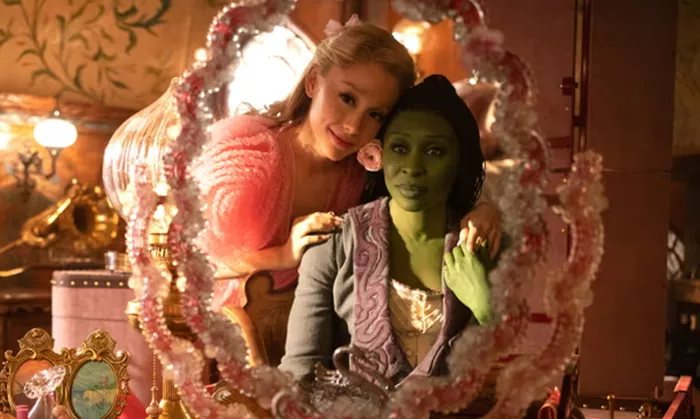Musicals, once linked to high school glee clubs and basic stage attire, are now enjoying a stylish resurgence, thanks to the cinematic release of *Wicked*. Released this past weekend, the film is expected to gross over $100 million at the US box office alone. Promoted by global pop star Ariana Grande and actor Cynthia Erivo, both of whom sport high-fashion brands like Vivienne Westwood, Schiaparelli, and Louis Vuitton, *Wicked* is bringing musicals to the forefront of the fashion world.
Even before its premiere, *Wicked* had already sparked a wave of collaborations with major brands. Over 400 partnerships were formed, including names like Gap, Crocs, H&M, Marks & Spencer, and more. Liberty, the iconic London department store, transformed its windows into *Wicked*-inspired displays in partnership with Universal Pictures.
Ryan McBryde, the former artistic director of the Mercury Theatre in Colchester, notes that in *Wicked*, the land of Oz is portrayed as an exclusive, high-fashion society. “It makes perfect sense for these brands to align with that image,” he says, referring to the show’s couture-like aesthetics.
This fashionable turn for musicals extends beyond *Wicked*. On Broadway, the revival of *Sunset Boulevard*, starring Nicole Scherzinger, has garnered attention for its “Jil Sander-chic” costumes. Meanwhile, the London production of *Cabaret* showcases leather and lingerie that could easily fit on the spring/summer 2024 runways. Even the new musical adaptation of *The Devil Wears Prada* at London’s West End has caught the fashion world’s eye, with high-end brands like Prada and Chanel taking center stage.
For years, red carpets have been a key marketing tool for the fashion industry, while costume designers have turned to contemporary fashion to engage audiences. David Benedict, London theatre critic for *Variety*, explains that designers are increasingly using fashion to make their productions feel more relatable and accessible.
Soutra Gilmour, who designed the costumes for *Sunset Boulevard*, believes that clothes are a powerful way to connect the stage to the audience. “Costumes speak a universal language, allowing people to easily connect with the story,” she says.
In *Romeo + Juliet* on Broadway, designer Enver Chakartash created fashion-forward looks that reflect today’s youth culture. Though the show is not strictly a musical, the inclusion of original songs by Jack Antonoff (known for his work with Taylor Swift and Sabrina Carpenter) adds to its modern feel. Chakartash emphasizes the importance of costumes that resonate with how young people present themselves, incorporating brands like Ludovic de Saint Sernin, Adidas, and Vivienne Westwood, as well as a vintage Care Bear T-shirt for Juliet in the balcony scene.
McBryde points out that musicals have always had ties to the fashion world, citing collaborations like Coco Chanel with Jean Cocteau in the 1920s and Halston with Martin Scorsese in the 1970s. However, today’s explosion of imagery on the internet makes it easier for fashion and theater to blend seamlessly.
There’s an increasing crossover between the two worlds: Es Devlin, who has designed for *Les Misérables*, as well as for artists like Stormzy, Beyoncé, and Louis Vuitton, and Tom Scutt, who designed the *Cabaret* costumes, also collaborated with Sam Smith.
While some of the current fashion-forward musicals are influenced by trends like cowboycore (as seen in the recent West End production of *Oklahoma!*), there’s a clear drive for modernity. Chakartash explains that today’s musicals often aim to present something fresh and relatable, while also remaining aspirational.
As audiences flock to *Cabaret*, they might leave wondering where to find that seafoam-green coat straight out of a Gucci runway. Similarly, after watching *Wicked*, many might find themselves craving emerald green skirts and bubble skirts. Musicals are no longer just about the music—they’ve become a celebration of style, creating an irresistible fusion of entertainment and fashion.
Related topics:
- Designer’s Work Sheds Light on the Dangers of Drugs
- Burberry Opens Stunning New Store at Singapore’s Wisma Atria
- Copenhagen Fashion Week Makes Its Stylish Return from January 27-31

